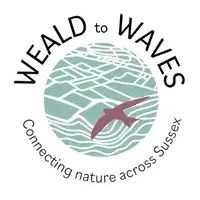Meet our target species
By Alex Briggs - 09 May 2023
The media is overflowing with staggering numbers on species and wildlife populations in decline in countries around the world - and we know that the UK is one of the worst hit. So how can we measure nature decline in Sussex? This is a hugely important question with significant consequences for the corridor. Without a clear record of what we are losing we can’t understand the scale of our nature crisis or advocate for its recovery. The data on climate, soil health, air and water pollution can be complex. By identifying the species and habitats most at risk from fragmentation, we have a clearer way of tracking the impact of the corridor on nature recovery in Sussex.
The Species Storytellers: how different species can help us understand the nature crisis
Ecosystems are fantastically complicated. We only have a limited understanding of the complex interactions driving them. So how can we quantify the health of an ecosystem? One solution is to use indicator species. These are species that reflect the environmental conditions of an area, tell us about the wider wildlife there and, by their presence, abundance or absence, be used to diagnose the health of an ecosystem.
Choosing the target species
Weald to Waves has chosen a range of target species to help us monitor nature recovery in the corridor. These species, from the most critically endangered to common species that are becoming rarer, were chosen for a number of reasons. We wanted to reflect the wide range of wildlife in Sussex including mammals, invertebrates, reptiles, amphibians, fish and birds. Other species were chosen to represent the widespread declines in their taxonomic group, or illustrate the breadth of pressures on wildlife in Sussex. Many of these species are indicators of ecosystem health, where declines in these species are likely to be associated with declines across the whole ecosystem.
Nowhere left to go: species affected by habitat loss
Habitat loss is one of the major factors affecting wildlife in Sussex. As land use changes and human activity intensifies, suitable habitats are shrinking rapidly for many species. Many people, particularly our elders, still remember when water voles, turtle doves and field crickets were a common sight in the countryside. Today, many people have never seen them at all. Field cricket populations dropped to less than 100 in the 1980s. The last of them were heard singing in West Sussex at a site within the current corridor route. Similarly, with changing land use and massive hunting pressure, turtle doves have almost disappeared, declining by 98% since 1970. The water vole, once inhabiting most of our waterways, dropped by 90% between 1989 and 1998, thanks to pollution, loss of habitat and the release of the invasive American mink, once farmed for their fur.

Cut off and isolated: species affected by fragmentation
As habitats degrade or shrink, they become cut off and isolated, leading to local population declines. Due to barriers to migration and the loss of hedgerows we have lost 50% of European hedgehog populations since 2000, and the hazel dormouse is now classed as vulnerable to extinction. Similarly, freshwater barriers such as weirs, along with water pollution and overfishing have led to the loss of 95% of our European eel populations since the 1980s.

Canaries in a coal mine: indicator species
These species are invaluable to conservationists as they provide a warning sign for the health of the ecosystems they inhabit. As predators, higher in the food chain, they rely on healthy populations of prey species, so their fate often reflects that of the wider ecosystem. Common and soprano pipistrelle bats are severely affected by declines in invertebrates, as well as being affected by habitat fragmentation, chemical and light pollution. Kelp forests, once abundant along the Sussex coast, have almost disappeared. Kelp is an important habitat for many species, including providing nurseries for fish. As conservationists work to promote the recovery of our kelp, grey seals feeding on fish provide an indication of the success of their efforts. Finally, the common European adder is rapidly declining due to habitat loss, depending on increasingly isolated heathland areas, and may soon disappear from our landscapes.

Last of their kind: Losing our common species
While many of the species listed above are severely threatened, even our commonest wildlife is declining. While the small tortoiseshell butterfly is widespread, declines in the south of England possibly due to a parasitic fly, mean this is a species of conservation concern. Similarly, the common lizard and slow worm are facing declines due to habitat loss. Common frogs and toads are also suffering from the loss of garden ponds to breed, along with fragmentation as 250,000 toads are killed on roads each year.

Why does this matter?
The upsetting truth is that our wildlife is declining, fast. Almost half of all UK bird species populations dropped between 2015 and 2020. We are in a global biodiversity crisis, every bit as serious as the climate crisis. The UK is among the most nature depleted countries in the world. It is vital that we act now to reduce the pressures for wildlife and reverse the spiralling downward trend.
Visit our Wildlife in the Corridor page to learn more or browse our Pressures map to find out what is impacting these species.

